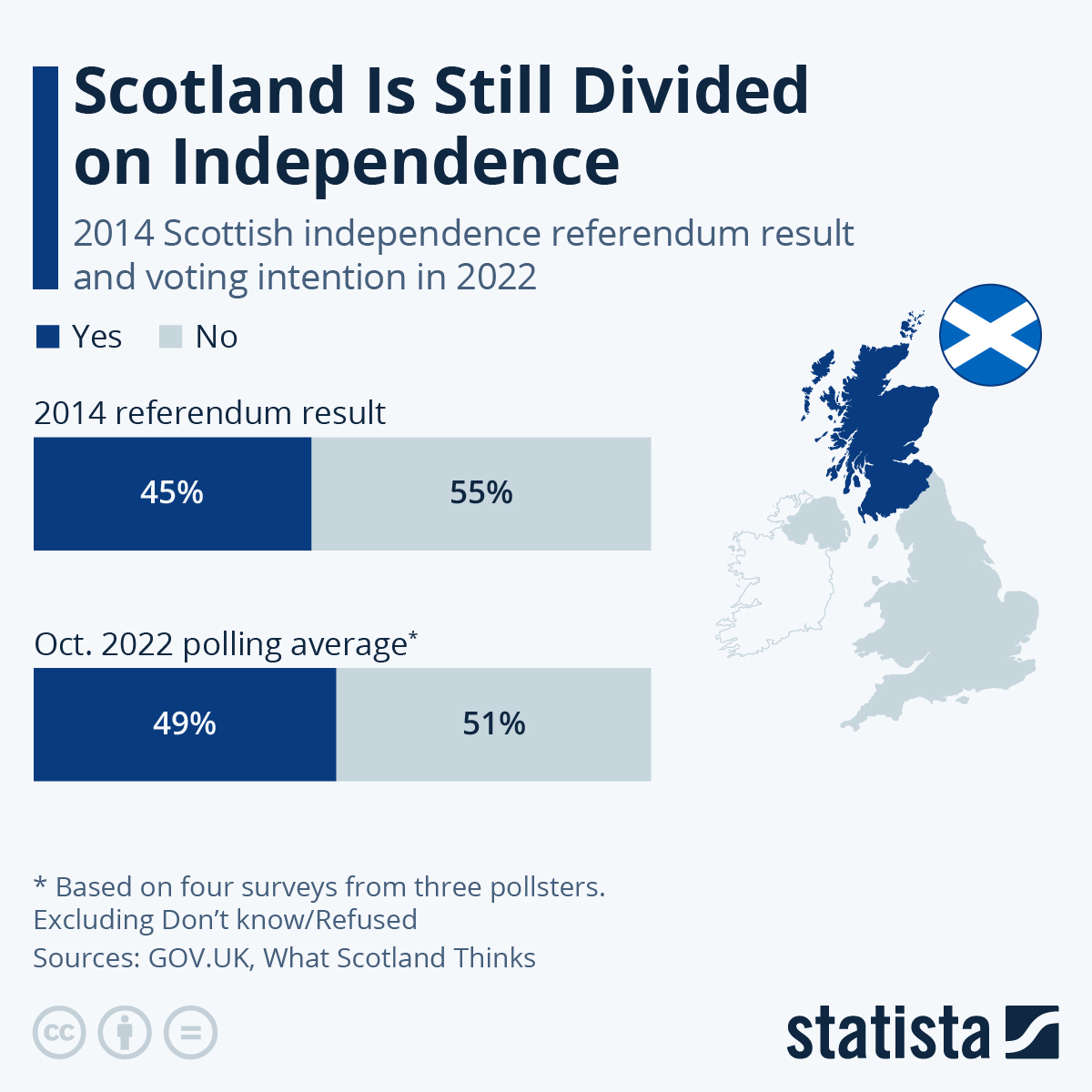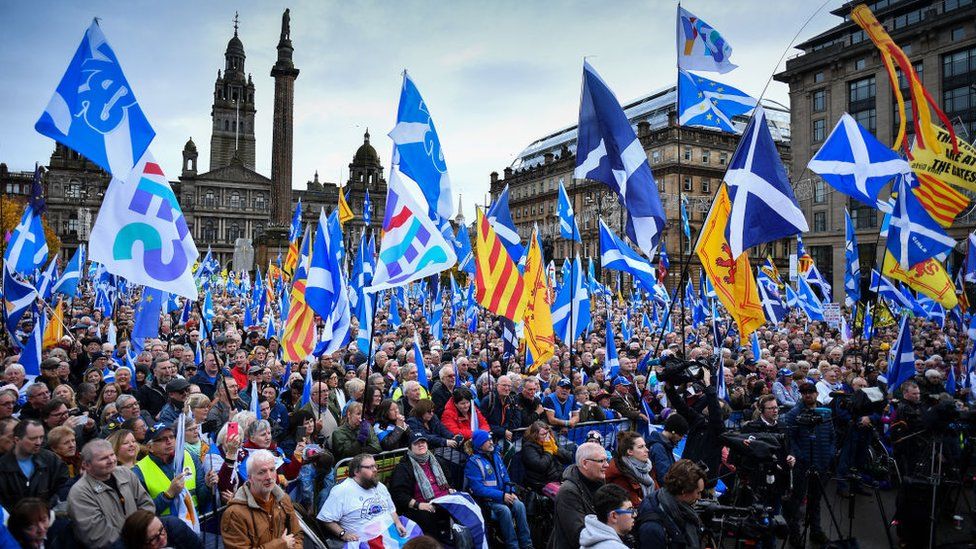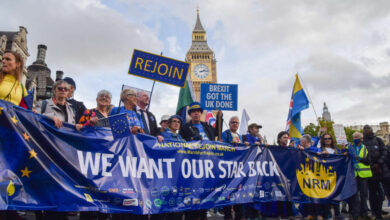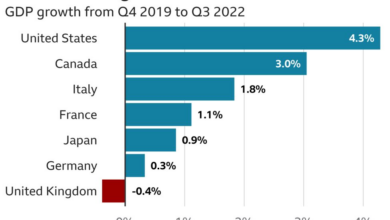
Ten Years On From Scotlands Independence Referendum
Ten years on from scotlands independence referendum – Ten years on from Scotland’s independence referendum, we find ourselves reflecting on a decade of significant political, economic, and social shifts. The 2014 vote, while ultimately resulting in a “No” to independence, ignited a firestorm of debate that continues to shape Scotland’s identity and its relationship with the rest of the UK. This isn’t just a historical recap; it’s a look at the lasting consequences of a decision that continues to reverberate through Scottish society.
From the passionate campaigns of 2014 to the ongoing discussions about a second referendum, this post explores the complex legacy of that vote. We’ll examine the SNP’s performance in government, analyze the impact of Brexit, and delve into the economic realities facing Scotland – considering both the potential benefits and drawbacks of independence. We’ll also explore the evolving national identity and cultural expressions that have emerged since the referendum, and consider the path forward, whatever that may be.
The 2014 Referendum
Ten years on, the 2014 Scottish independence referendum remains a pivotal moment in Scottish and UK history. The campaign leading up to the vote was intense, deeply dividing communities and shaping the political landscape for years to come. Understanding the arguments, the results, and the aftermath is crucial to grasping Scotland’s current political climate.The arguments for and against independence were sharply defined.
The “Yes” campaign, advocating for independence, focused on Scotland’s ability to govern itself, control its own resources, and forge a more socially just and economically prosperous future free from the constraints of Westminster. They emphasized Scotland’s distinct identity and culture, arguing that an independent Scotland could better reflect its own values and priorities. Economic arguments centered on the potential for Scotland to manage its own oil reserves and implement different economic policies.Conversely, the “No” campaign highlighted the economic risks of independence, warning of potential currency instability, border issues, and the loss of access to the UK’s larger market.
They emphasized the benefits of remaining within the UK, including the security and stability of the Union, shared resources, and a strong defense alliance. Concerns were raised about the potential disruption to Scotland’s economy and the uncertainty of an independent future.
The Results and Immediate Impact
The 2014 referendum resulted in a 55% vote to remain in the UK and a 45% vote for independence. While the “No” vote prevailed, the unexpectedly close result shocked many and demonstrated a significant level of support for independence within Scotland. The immediate impact was a period of political reflection and reassessment. While the independence question was seemingly settled, the near-miss fueled ongoing debate and strengthened the position of the Scottish National Party (SNP), who had spearheaded the “Yes” campaign.
The result led to renewed calls for greater devolution of powers to the Scottish Parliament.
Ten years on from the Scottish independence referendum, the political landscape feels dramatically different. It’s a stark reminder that even deeply divisive issues, like the one highlighted in this article about a California gun rights group looking to overturn the state’s ban on assault weapons california gun rights group look to overturn state ban on assault weapons , can still ignite passionate debate.
The long-term effects of such referendums, and the ongoing battles over fundamental rights, continue to shape our world.
The Political Landscape Before and After the Vote
Prior to the 2014 referendum, Scottish politics were characterized by a growing sense of national identity and a desire for greater self-determination. The SNP, advocating for independence, had experienced a surge in popularity, winning a majority of seats in the Scottish Parliament in 2011. This strengthened their position to push for the referendum. The political landscape was largely dominated by the debate surrounding independence, with other political issues often overshadowed.Immediately following the referendum, the political landscape shifted, though not dramatically.
The SNP, despite losing the referendum, remained the dominant force in Scottish politics, continuing to advocate for greater autonomy within the UK. The close result emboldened their calls for further devolution, and the subsequent Smith Commission led to increased powers for the Scottish Parliament in areas such as income tax and welfare. The referendum’s impact on the UK’s political landscape was also significant, contributing to the rise of English nationalism and further fueling debates about the future of the Union.
Scotland’s Political Trajectory Since 2014: Ten Years On From Scotlands Independence Referendum

The 2014 independence referendum, while resulting in a “No” vote, fundamentally altered Scotland’s political landscape. The subsequent years have witnessed a period of significant change, shaped by the SNP’s continued dominance, the complexities of Brexit, and evolving policy disagreements among Scotland’s major parties. This period has been characterized by both considerable success for the SNP and growing challenges to its authority.
The SNP’s Performance in Government Since 2014
Since 2014, the SNP has maintained its position as the dominant force in Scottish politics, consistently winning majority or near-majority governments in Holyrood elections. This success can be attributed to a number of factors, including strong support for independence, effective campaigning, and a perceived competence in managing devolved areas like education and healthcare. However, the SNP’s record is not without its critics.
Ten years on from the Scottish independence referendum, and the political landscape feels wildly different. The global implications are huge; consider, for instance, the potential domestic and international chaos outlined in this article about how bad could a second trump presidency get , and how that instability could ripple across the Atlantic. Thinking about that makes the ongoing debate surrounding Scottish independence seem almost quaint in comparison, though still vitally important.
Challenges have included managing the country’s budget within the constraints of the Barnett Formula, navigating the complexities of Brexit, and addressing persistent concerns regarding public services. The party’s handling of key policy areas, such as education reform and the National Health Service (NHS) in Scotland, has been subject to both praise and criticism, often depending on the perspective of the observer and their political alignment.
The internal divisions within the SNP regarding the best approach to achieving independence have also become increasingly prominent in recent years.
The Impact of Brexit on Scotland’s Political and Economic Situation
Scotland voted overwhelmingly to remain in the European Union in the 2016 referendum, a stark contrast to the UK-wide result. This divergence has fueled further calls for independence, as many Scots feel their democratic wishes have been disregarded. Brexit has had a tangible impact on Scotland’s economy, particularly impacting sectors reliant on trade with the EU. The loss of frictionless trade and the introduction of new customs checks have presented significant challenges for businesses, highlighting the economic interconnectedness between Scotland and the EU.
The political fallout has been equally significant, exacerbating existing tensions between the Scottish and UK governments and further strengthening the pro-independence argument within Scotland. The economic impact of Brexit on Scotland continues to be debated, with various analyses offering differing conclusions depending on the assumptions and methodologies employed.
Key Policy Differences Between the SNP and Other Major Scottish Political Parties
The SNP’s commitment to Scottish independence is the most significant difference separating it from other major parties. The Scottish Conservative Party, while acknowledging devolution, generally favors maintaining the Union and focuses on economic growth and fiscal responsibility. The Scottish Labour Party, while supporting greater devolution, has historically focused on social justice issues and improving public services. The Scottish Liberal Democrats advocate for a more federalist approach within the UK, seeking to strengthen the powers of the devolved administrations but remaining within the Union.
These differing positions on independence have shaped the political discourse in Scotland and have been at the heart of numerous electoral campaigns. The practical policy differences between the parties extend beyond independence to encompass areas such as taxation, education reform, and environmental policy, though the independence question often overshadows these other issues.
Social and Cultural Shifts
The 2014 Scottish independence referendum acted as a powerful catalyst, profoundly impacting Scottish national identity, cultural expression, and the relationship between Scotland and the rest of the UK. The debate itself, regardless of the outcome, brought the question of Scottish identity to the forefront of national consciousness, leading to a period of significant social and cultural evolution.The referendum intensified pre-existing trends in Scottish cultural production.
A renewed focus on Gaelic language and culture, for instance, became more visible, with increased government investment and community initiatives aimed at promoting its use and preservation. Similarly, there was a surge in artistic expression exploring themes of Scottish identity and independence, evident in literature, film, music, and visual arts. This manifested in a wider range of narratives and perspectives being represented, challenging traditional notions of Scottish identity and fostering a more inclusive and diverse cultural landscape.
Ten years on from the Scottish independence referendum, the debate about national identity continues to rage. It’s interesting to contrast that with the news from Louisiana, where a very different kind of national identity is being reinforced – in god we trust will be seen in all Louisiana public schools. The contrasting approaches highlight how diversely nations define themselves, even within the context of a single world.
Thinking about Scotland’s future, this makes me wonder about the role of shared values versus shared history in shaping national identity.
Scottish National Identity and Cultural Expression Post-Referendum
The 2014 referendum undeniably strengthened a sense of distinct Scottish national identity for many. While support for independence remained a key aspect, the referendum also highlighted the diversity of opinion within Scotland. The debate itself fostered a more open and nuanced discussion about what it means to be Scottish, encompassing a wider range of viewpoints and experiences than previously seen.
This resulted in a more complex and multifaceted understanding of Scottish identity, moving beyond simplistic binary oppositions. The subsequent years saw a rise in the use of the Saltire (Scottish flag) as a symbol of national pride and a more assertive Scottish presence on the international stage.
Evolution of Public Opinion on Scottish Independence
Since 2014, public opinion on Scottish independence has fluctuated. While the 2014 referendum resulted in a “No” vote, support for independence has consistently remained significant, often polling above 40% and occasionally exceeding 50% in certain surveys. Several factors have influenced this fluctuation, including major political events such as Brexit, which saw Scotland vote overwhelmingly to remain in the European Union, and shifting economic conditions.
The ongoing debate surrounding the UK’s place in the world has further fueled the independence movement, leading to renewed calls for a second referendum. These fluctuations demonstrate the dynamic and evolving nature of public opinion on this crucial issue.
Scotland and the Rest of the UK: A Changed Relationship
The 2014 referendum irrevocably altered the relationship between Scotland and the rest of the UK. The intensity of the debate, coupled with the narrow margin of the “No” vote, created a palpable sense of division. Trust between the Scottish and UK governments was eroded, with accusations of broken promises and a lack of understanding of Scottish concerns frequently surfacing.
This has manifested in increased political tension and a growing sense of divergence in policy priorities between Scotland and the rest of the UK, particularly regarding issues like Brexit and energy policy. The subsequent years have been characterized by a complex interplay of cooperation and conflict, highlighting the challenges of navigating a devolved political landscape in the aftermath of a divisive referendum.
The Path to a Future Referendum (if applicable)

Ten years on from the 2014 referendum, the question of Scottish independence remains a potent force in Scottish politics. While the immediate aftermath saw a period of relative calm, the political landscape has shifted considerably, making another referendum a distinct possibility, albeit one shrouded in complexity and uncertainty. The path towards another vote is not a straightforward one, and depends heavily on the interplay of various political and legal factors.The current political climate is highly charged.
The Scottish National Party (SNP), the dominant force in Scottish politics, remains firmly committed to independence and continues to push for a second referendum. However, the UK government, under successive administrations, has consistently refused to grant the necessary legal authority for such a vote, maintaining that the 2014 referendum was a “once-in-a-generation” event. This difference in opinion creates a significant hurdle, leading to ongoing political tension and legal challenges.
The recent shift in the UK political landscape, with a new Prime Minister and a changing parliamentary dynamic, might offer new avenues for negotiation, but it remains to be seen how this will play out.
A Hypothetical Timeline for a Future Referendum
Several steps would be necessary to organize and conduct a future Scottish independence referendum. Firstly, the Scottish Parliament would need to pass a bill authorizing the referendum. This would likely trigger a legal challenge from the UK government, potentially leading to protracted court battles. Assuming the Scottish Parliament prevails (or a compromise is reached), the next step would involve setting a date for the vote and establishing the electoral commission responsible for overseeing the process.
A detailed campaign period would follow, with both the pro-independence and unionist sides actively campaigning across the country. Finally, the referendum would be held, votes counted, and the result declared. This process could realistically take anywhere from 12 to 24 months, depending on the legal challenges and the complexity of the campaign. This timeframe mirrors the lead-up to the 2014 referendum, which involved extensive preparation and public debate.
Key Arguments For and Against Independence
The arguments for and against Scottish independence have evolved since 2014, reflecting changes in the economic and political climate.
It’s crucial to understand that these arguments are complex and often intertwined. Many factors influence individual opinions, and the relative importance of each point can vary significantly.
- Arguments for Independence:
- Greater control over Scotland’s economic destiny, allowing for tailored policies to suit Scotland’s specific needs and resources.
- The ability to forge independent international relationships and pursue a distinct foreign policy.
- Enhanced democratic self-determination and greater control over Scotland’s laws and institutions.
- The potential for a more socially just and equitable society, tailored to Scottish values and priorities.
- Arguments Against Independence:
- Concerns about economic stability and the potential negative impact on Scotland’s economy following separation from the UK.
- Uncertainty regarding Scotland’s future currency and membership of the EU.
- The potential disruption to trade and investment relationships with the rest of the UK.
- Concerns about the impact on national security and defence.
Illustrative Examples

Ten years on from the 2014 Scottish independence referendum, it’s crucial to examine the tangible impacts on various sectors of Scottish life. While the referendum itself didn’t directly cause all subsequent changes, the political landscape it shaped undeniably influenced policy and investment decisions. This section will explore the effects on two key areas: the oil and gas industry and the education system.
Impact on the Scottish Oil and Gas Industry
The oil and gas industry in Scotland experienced significant shifts following the 2014 referendum and the subsequent political climate. The decline in global oil prices, starting around 2014, presented major challenges regardless of the referendum outcome. However, the political uncertainty surrounding independence contributed to a climate of hesitancy among investors. This led to decreased investment in exploration and production, impacting employment numbers and overall industry output.
Companies were less willing to commit to long-term projects in a politically unstable environment. The Scottish Government’s focus on transitioning to a greener economy also played a role, though this transition was already underway globally and not solely a consequence of the referendum. Furthermore, Brexit, while not directly linked to the referendum, added another layer of complexity to trade and regulations, further affecting the sector’s viability and profitability.
The industry has seen job losses and a restructuring of operations in response to these multifaceted pressures.
Impact on the Scottish Education System, Ten years on from scotlands independence referendum
The Scottish education system has undergone several changes since 2014, some influenced by broader trends and others possibly linked to the political context. The Curriculum for Excellence (CfE), introduced before 2014, continued to be implemented and refined. This involved ongoing efforts to improve assessment methods, with a move towards more holistic approaches focusing on skills and competencies rather than solely standardized testing.
There have been increased efforts to address attainment gaps between different socio-economic groups, including targeted funding and support programs for disadvantaged schools. The Scottish Government also invested in teacher training and professional development initiatives to improve the quality of education. These initiatives aimed to improve outcomes for all pupils, with a particular focus on closing the attainment gap, a long-standing issue addressed across various administrations.
However, measuring the direct impact of post-2014 political developments on these educational changes is complex, as many reforms were already underway or driven by wider educational policy trends.
A decade after the 2014 referendum, the question of Scottish independence remains a potent force in the nation’s political landscape. While the “No” vote prevailed, the referendum’s impact is undeniable, shaping everything from the SNP’s dominance in Scottish politics to the ongoing debate about Scotland’s place within the UK and its future. Understanding this legacy is crucial for comprehending not just Scotland’s past, but also its potential futures.
The discussions surrounding a second referendum, economic stability, and evolving national identity highlight a nation grappling with its own destiny, and its journey continues to be one worth watching.



